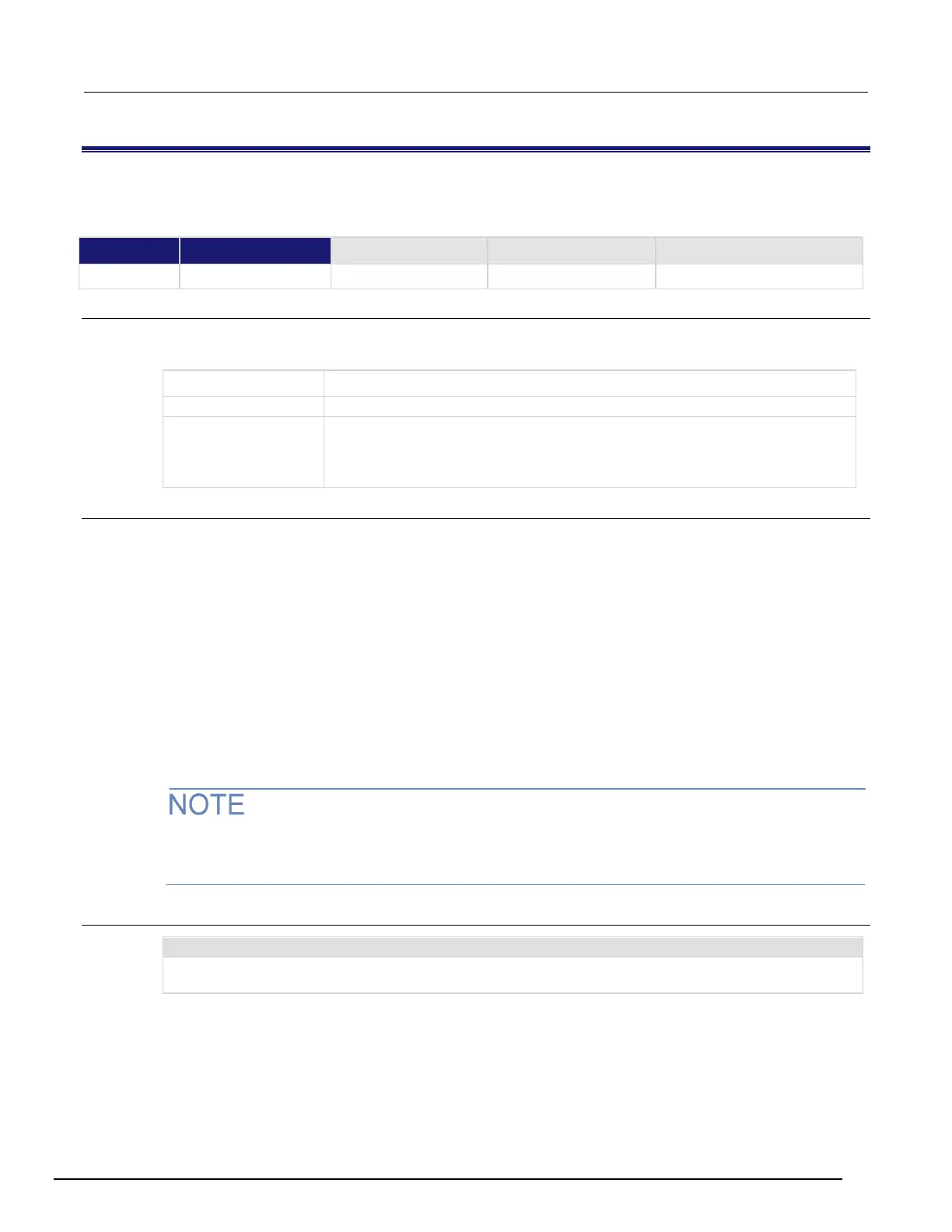Usage
display.loadmenu.add("displayName", "code")
display.loadmenu.add("displayName", "code", memory)
Determines if code is saved to nonvolatile memory:
▪ 0 or display.DONT_SAVE: Does not save the code to nonvolatile memory
▪ 1 or display.SAVE: Saves the code to nonvolatile memory (default)
Details
After adding code to the load menu, you can run it from the front panel by pressing the LOAD key,
then selecting USER TESTS to select from the available code to load. Pressing the RUN key will then
run the script.
You can add items in any order. They are always displayed in alphabetic order when the menu is
selected.
Any Lua code can be can be included in the code parameter. If memory is set to display.SAVE,
the entry (name and code) is saved in nonvolatile memory. Scripts, functions, and variables used in
the code are not saved by display.SAVE. Functions and variables need to be saved with the code.
If the code is not saved in nonvolatile memory, it is lost when the Series 3700A is turned off. See
Example 2 below.
If you do not make a selection for memory, the code is automatically saved to nonvolatile memory.
You can create a script that defines several functions, and then use the
display.loadmenu.add() command to add items that call those individual functions. This allows
the operator to run tests from the front panel.
Example 1
Assume a user script named "Test9" has been loaded into the run-time environment. Adds the menu entry to
the USER TESTS menu to run the script after loading.

